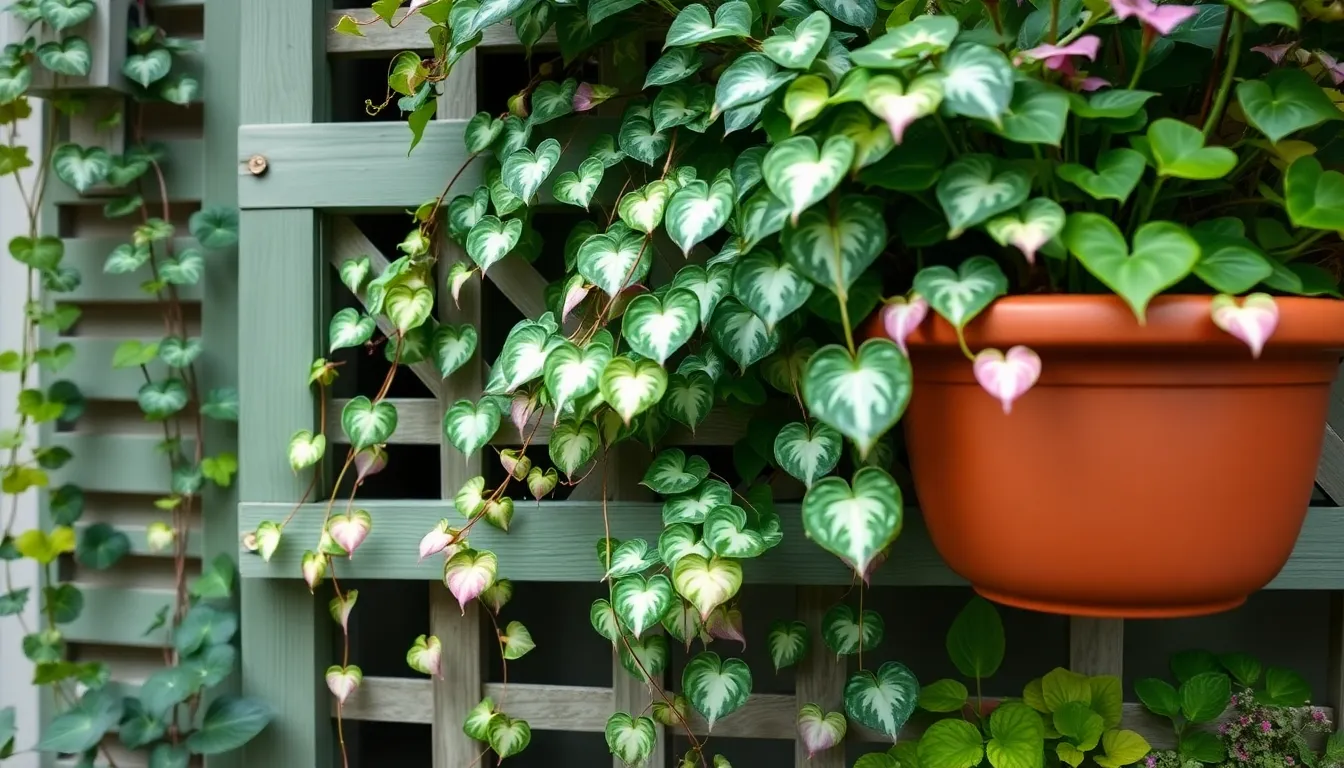Imagine transforming a bare wall into a lush, living masterpiece that not only enhances your space but also purifies the air you breathe. Whether you’re a seasoned gardener or just setting out on your green-thumb journey, creating a vertical garden at home offers a delightful blend of beauty and practicality that can be achieved by anyone with a little guidance and creativity. Vertical gardening is more than just a trend; it’s an innovative solution for maximizing space and bringing life to the smallest of areas, making it an exciting endeavor for both urban apartment dwellers and those with sprawling backyards.
In this article, you’ll discover the essentials of planning and constructing your very own vertical garden, from choosing the right plants to selecting the ideal structure for your space. We’ll guide you through the process step-by-step, ensuring you have the confidence to start, maintain, and enjoy your vertical oasis. Whether you’re looking to grow a bounty of fresh herbs right outside your kitchen window or adorn your living room with vibrant, cascading greenery, this guide provides the tools and inspiration to make your vertical garden flourish. Let’s embark on this rewarding journey together, transforming your living space into a verdant sanctuary that reflects your personal style and love for nature.
Select a Suitable Wall Space
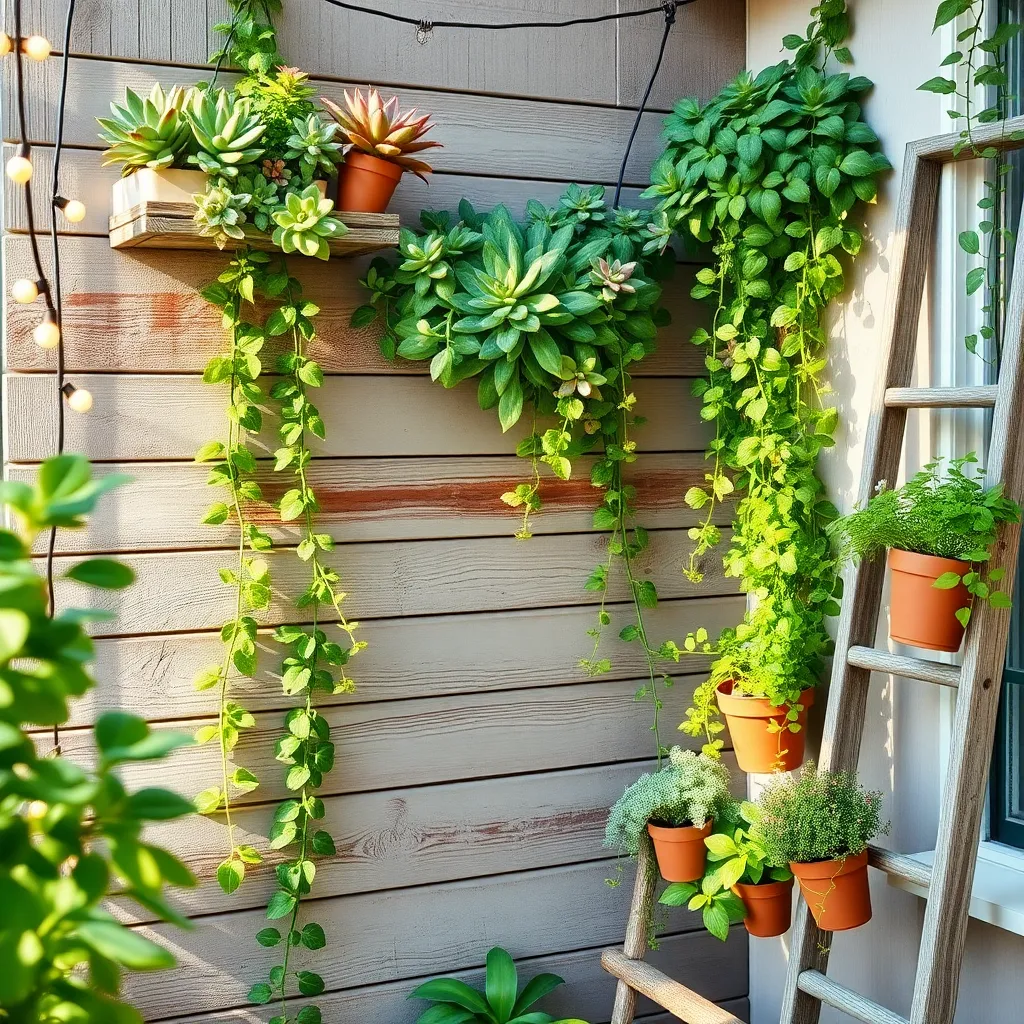
Choosing the right wall space is crucial for a successful vertical garden, as it determines the amount of light and the types of plants you can grow. Assess the natural light conditions of your potential wall space—full sun, partial shade, or full shade—to ensure it matches the needs of your chosen plants.
Look for a sturdy wall that can support the weight of a vertical garden, which can become quite heavy when filled with soil and plants. If you’re using a rented space, consider lighter options like modular systems or fabric pockets that are easier to install and remove.
Ensure the wall has access to a water source, as vertical gardens require regular watering, especially in warm weather. Installing a drip irrigation system can be an efficient way to keep your plants hydrated without the hassle of daily watering.
Beginners might start with easy-to-grow plants like ferns, herbs, or succulents, which generally require less maintenance and are more forgiving of initial mistakes. Advanced gardeners might experiment with more demanding species like orchids or jasmine, which require specific humidity and light conditions to thrive.
Gather Necessary Materials and Tools
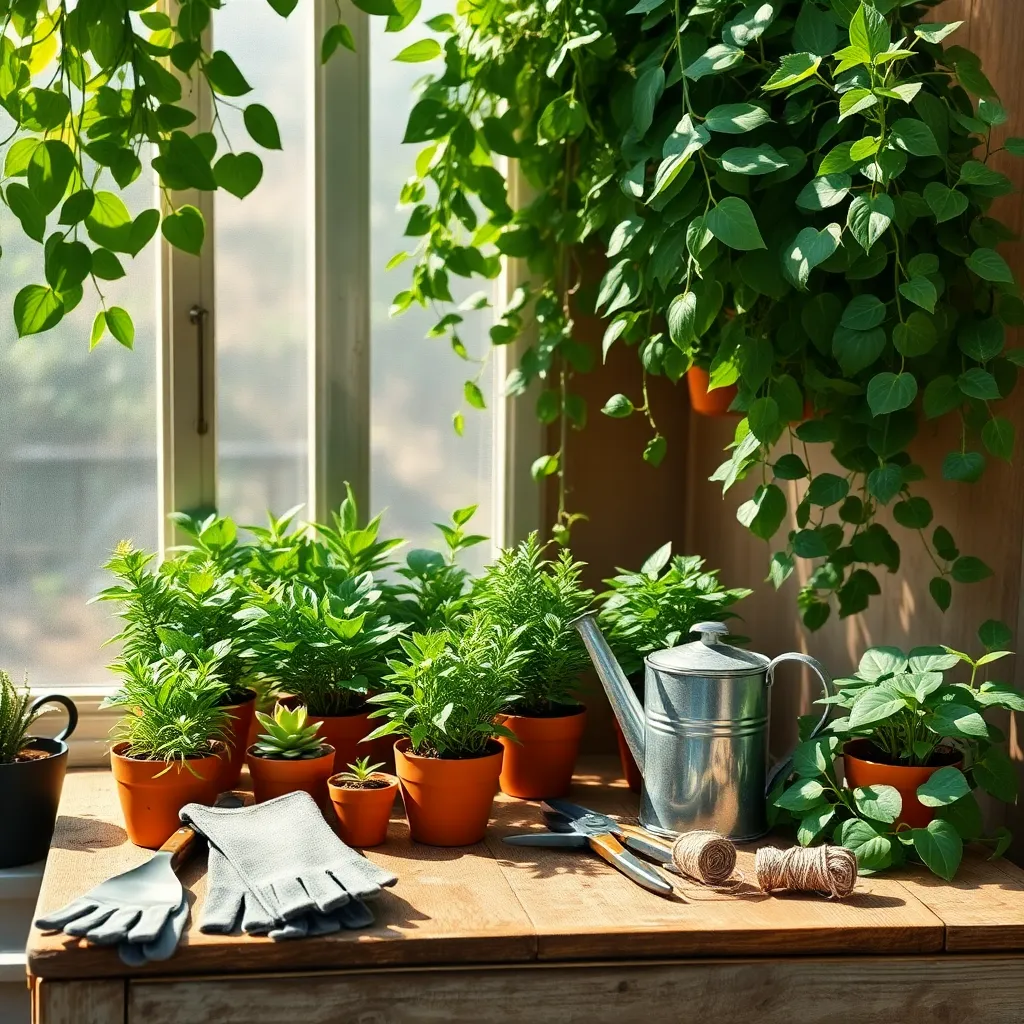
Once you’ve selected the perfect wall space, it’s time to gather the necessary materials and tools for your vertical garden. Start by acquiring a sturdy vertical frame or support structure since this will form the backbone of your garden and ensure it stays secure.
You’ll need containers or pockets to house your plants, which can range from simple fabric pockets to more elaborate modular systems. Consider the weight of these containers when filled with soil and plants, ensuring your wall can support them.
Next, choose a high-quality potting mix that suits the types of plants you plan to grow. For most vertical gardens, a lightweight, well-draining soil mixture is ideal, as it provides the necessary nutrients while preventing waterlogging.
Don’t forget to equip yourself with essential gardening tools such as a trowel, pruning shears, and a watering can or hose with a gentle spray nozzle. These tools will help you maintain your garden efficiently, ensuring your plants stay healthy and thriving.
Install a Sturdy Support Structure
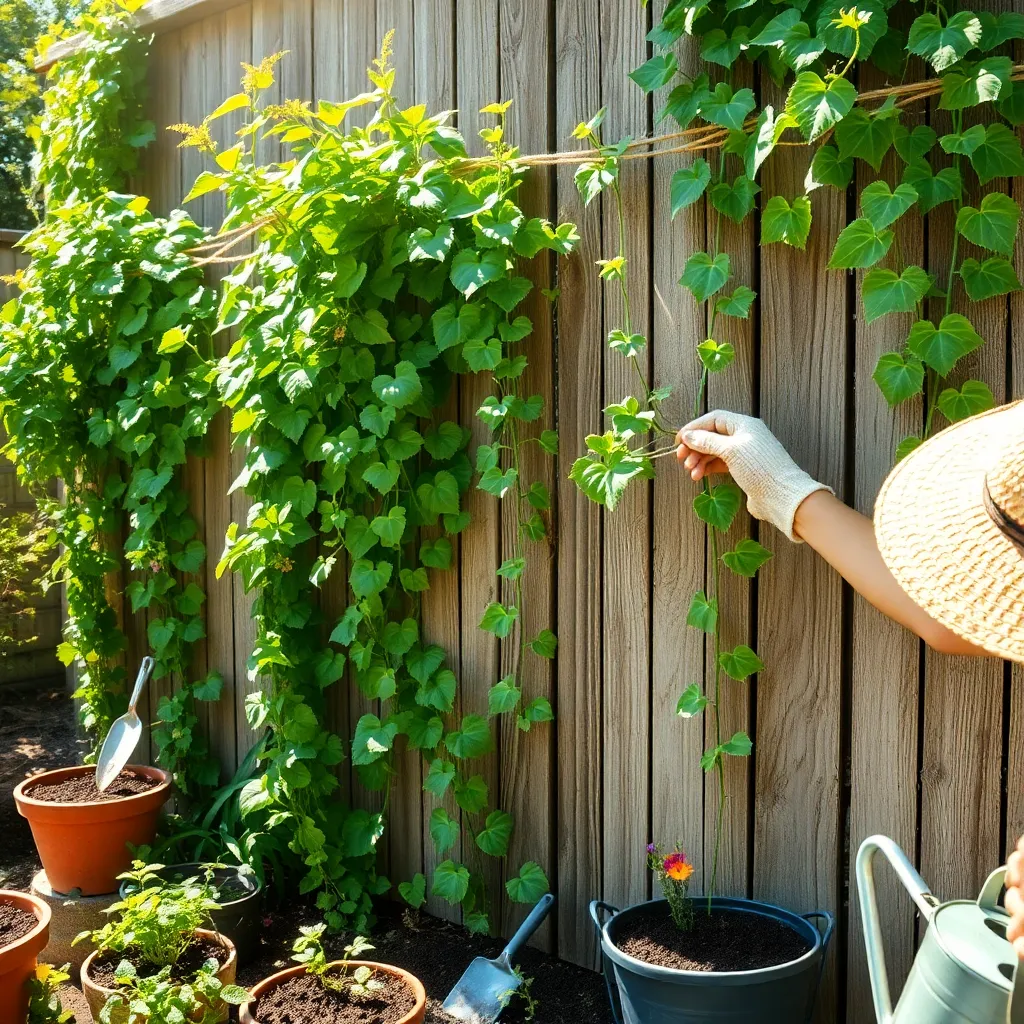
Once you’ve gathered your materials, the next step is to install a sturdy support structure for your vertical garden. Choose a location that receives adequate sunlight, ideally six to eight hours a day, as this is crucial for most plant varieties used in vertical gardens.
Consider using materials like wooden trellises, metal grids, or even repurposed ladders to create a reliable framework. Ensure the structure is firmly anchored to prevent it from toppling over, especially if you plan to grow heavier plants like tomatoes or cucumbers.
For a basic setup, a wooden trellis is both aesthetically pleasing and functional. Secure it to a wall or fence with brackets and screws to provide stability and support to climbing plants like beans or peas.
Advanced gardeners might experiment with modular systems that allow for easy repositioning and expansion. These systems often come with built-in irrigation, making it easier to manage watering, which is especially beneficial in drier climates or during the summer months.
Remember to choose plants that are well-suited for vertical growth, such as vining or trailing species. Ensure proper spacing between plants to allow air circulation, which helps prevent disease and promotes healthy growth.
For the soil, opt for a lightweight potting mix that retains moisture yet drains well, such as a blend containing peat moss or coconut coir. Regularly check the moisture level, especially for plants in the higher sections, as they tend to dry out more quickly.
Choose Appropriate Plant Varieties
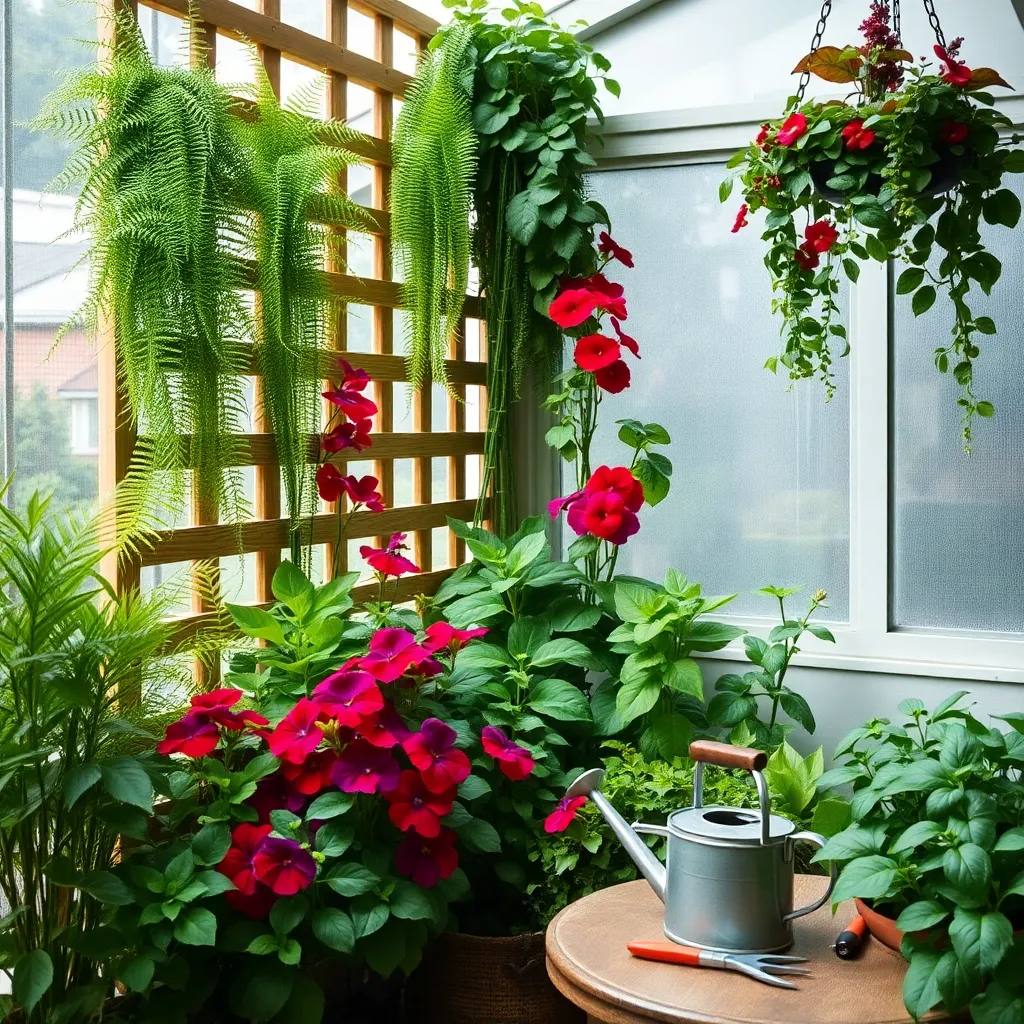
Choosing the right plant varieties is crucial for the success of your vertical garden. Select plants that naturally thrive in vertical arrangements and have growth habits that suit your available space and light conditions.
Consider plants like ivy, ferns, and small-leafed philodendrons for shaded vertical gardens. These plants are not only visually appealing but also relatively low-maintenance, making them ideal for beginners.
For sunnier spots, opt for flowering plants such as petunias, nasturtiums, or alyssum, which add vibrant colors to your vertical space. Ensure these plants receive at least six hours of sunlight daily and water them more frequently, as vertical gardens tend to dry out faster.
Advanced gardeners might enjoy experimenting with herbs like thyme, oregano, or basil, which can thrive in vertical setups with well-draining soil. Use a potting mix specifically designed for herbs and fertilize sparingly to avoid overgrowth.
When selecting plants, always check their mature size to ensure they won’t outgrow their allotted space. This foresight helps maintain a balanced and healthy vertical garden, reducing the need for constant pruning.
Plant and Arrange Vertically
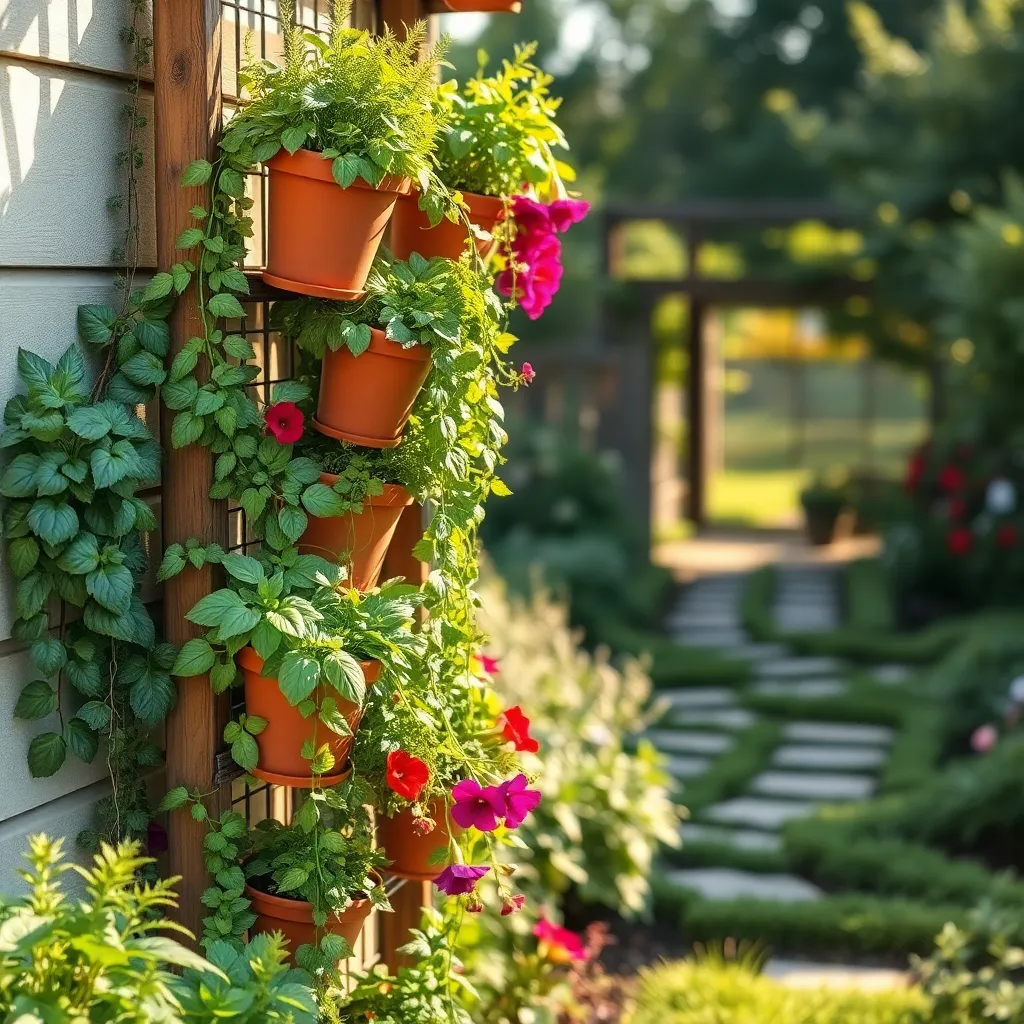
When creating a vertical garden, start by selecting a sturdy frame or structure to support your plants. Consider using materials like wood, metal, or recycled pallets that can withstand environmental conditions while providing stability.
Next, arrange your plants in a way that optimizes light exposure and water distribution. Place taller plants at the top where they will not overshadow shorter ones, allowing each plant to receive adequate sunlight.
Use high-quality potting soil that retains moisture but also drains well, ensuring healthy root development. A mix containing peat moss, perlite, and vermiculite is ideal for vertical setups, providing a balance of aeration and water retention.
Watering can be challenging in a vertical garden, so consider installing a drip irrigation system. This method ensures each plant gets the right amount of water without over-saturating those at the bottom.
For those looking to enhance their vertical garden, experiment with companion planting. Pair plants that benefit each other, such as tomatoes with basil, to improve growth and deter pests naturally.
Regular maintenance is crucial to keep your vertical garden thriving. Prune regularly to encourage growth and remove any diseased or dead foliage to prevent the spread of pathogens.
Conclusion: Growing Success with These Plants
In creating a vertical garden at home, we’ve explored five key relationship concepts: nurturing growth through patience, fostering creativity and adaptability, cultivating shared goals, understanding the importance of individual roles, and celebrating progress together. By integrating these principles into your gardening journey, you not only enhance your living space but also enrich your interpersonal connections, making them more resilient and fulfilling.
As an actionable next step, carve out a moment this week to plan your vertical garden with your partner, friend, or family member. Discuss plant choices, design ideas, and the roles each of you will take on. This collaborative effort will strengthen your bond and set the stage for continuous growth.
Remember, nurturing relationships, much like gardens, requires ongoing care and attention. Bookmark this article to revisit these insights whenever you need a refresher or inspiration to keep your relationship thriving.
By embracing these principles, you’re planting seeds for a flourishing relationship landscape, rich with understanding and joy. Together, let’s cultivate a future where each relationship blooms vibrantly, rooted in love and shared experiences.

